Pakistan is no stranger to the kindness of Mother Nature and hence houses some of the most interesting wonders found in the wild. Below is a list of a few of the fascinating natural wonders features unique to this country.
Princess of Hope
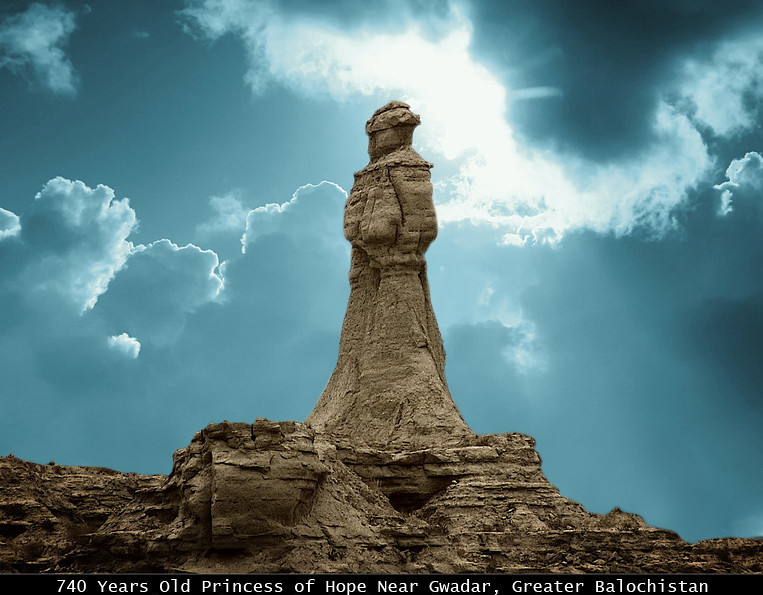
Natural forces and influences have resulted in a land formation closely resembling a woman with folded arms, clad in flowing robes. The statue stands tall and proud against the backdrop of a harsh landscape, amidst the deserted and barren surroundings. This explains why the formation was named “Princess of Hope” by Angelina Jolie when she first set eyes on it while visiting in her capacity as the UN Ambassador of Goodwill in 2002.
The area has muddy hills and harsh winds, and the continuous action of the winds on the pliable hills has resulted in this masterpiece of nature. The statue is located in Hingol National Park, near the Buzi Pass, along the Makran coast in the province of Balochistan. It is approximately 275 kilometers away from the economic hub of Karachi.
Trango Towers

Pakistan has the greatest untapped potential for adventure tourism and the Trango Towers are a testament to this fact. These feature the world’s greatest nearly vertical drop and are a treat for rock climbers everywhere.
The Trango Towers are located in the north of Pakistan and attract expeditions from all over the world as adventurers attempt to scale the deadly peaks. The east face of the summit of Great Trango Tower at 6,286 m has the world’s biggest almost vertical drop, making the ascent to the summit a very unique experience. The rock towers are located to the north of the Baltoro Glacier in the Karakorams in Gilgit Baltistan.
Khewra Salt Mines

These mines are the world’s second largest Salt mines and Pakistan’s oldest ones. They are located in Khewra, in the district of Jhelum, Punjab. Besides holding millions of tons of salt reserves, these mines are also a beautiful sight to behold. As a result, they act as a major tourist destination in Pakistan and are visited by close to 250,000 tourists every year, including both local and international visitors.
Its history dates back to its discovery by the troops of Alexander in 320 BC; however the actual trade from the mines originated in the times of the Mughals. The estimates of the reserves vary but upper estimates place the value at 600 million tons. Today, it is the largest source of salt in Pakistan and produces more than 350,000 tons per year.
Mud Volcanoes

Balochistan has close to 80 active mud volcanoes and clusters of these amazing natural phenomena can be found in 10 different locations. The most well-known of these volcanoes is Chandragup (which literally translates to the “Volcano of the moon”; it is 300 ft high and currently active.
Many believe the liquid mud oozing out of these volcanoes has healing powers. Some of these volcanoes are also considered holy by Hindus and visited while passing through on the longer pilgrimages.
These volcanoes are mentioned in the travelogue of Sir Frederick John, an army general traveling through the Ormara area on his way to Gawadar from Karachi in 1862. Besides this factoid, it is hard to ascertain the age of these mud volcanoes.
Five of the fourteen highest peaks

Pakistan has 5 mountains over 8,000 metres, 29 over 7,500 metres and 108 over 7,000 metres. Peaks between 4,000 metres and 7,000 metres are too many to be considered. Five of the fourteen highest peaks in the world with altitudes above 8000 metres are therefore found in Pakistan. These are the K-2, Nanga parbat, Gasherbrum-I, the Broad Peak and the Gasherbrum-II and each is a wonder in its own right.
Deosai Plains
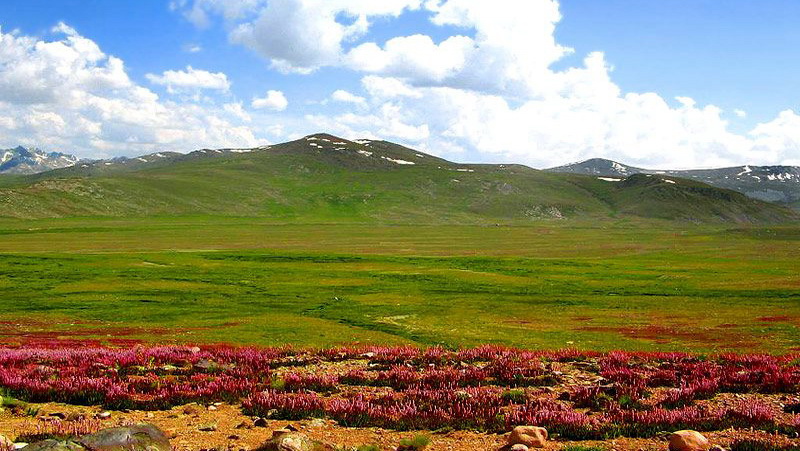
The literal translation of the name is aptly “Seat of the Giant.” At an average height of 4,114 metres, the Deosai plains are located on one of the highest plateaus of the world, second only to Tibet. Located in the Gilgit Baltistan region of Pakistan, the plains are spread over an area of some 3,000 kilometres and consist of beautiful meadows. Besides the impressive flora, the fauna is notable as well and includes the Brown Himalayan Bear, Snow Leopard, Golden Marmot, Red Fox, and the Himalayan Ibex. Sparrow Hawk, Griffon Vulture, Golden Eagle, Laggar Falcon and Snow Cock are some of the birds known to hang around the plains.
K-2

At 8,611 metres, K2 is the highest point of the Karakoram range and is the second highest mountain in the world, after Mount Everest. It also has the second-highest fatality rate, with one person dying for every four who manage to reach the summit. This has earned K-2 the title of the “Savage Mountain.” K-2 is also unique because it has never been climbed during the winter, and given the geographical conditions, any future attempts to reach the summit in those months would be in vain as well.
K-2 is located on the Pakistan-China border. Because it’s more dangerous to climb the mountain from the Chinese side, mountaineers usually attempt the ascent in Pakistan.
The Sphinx

While the Sphinx is almost synonymous with features of Ancient Egypt at this point and the Great Sphinx of Giza is considered a wondrous treasure to behold, Pakistan contains a Sphinx of its very own as well. However, unlike the one in Egypt carved on the instructions of man, this one is found perfectly sculpted in nature and a result of the action of purely natural forces. It is located in the same vicinity as the Princess of Hope in the province of Balochistan.
In Greek mythology, the half-human half-lion creature is always proven to be treacherous, cunning and mysterious, used to ensnaring men with a riddle or question. While the one on the Makran coast holds none of these characteristics, it does serve to fascinate the mind and enrapture senses at the very least.
Juniper Forests

The Juniper trees are referred to as “living fossils” due to their extremely slow growth and their ancient existence. The Juniper forests located near the town of Ziarat in Balochistan are the second largest in the world and some of the trees found there have been determined to be even as old as 57,000 years.

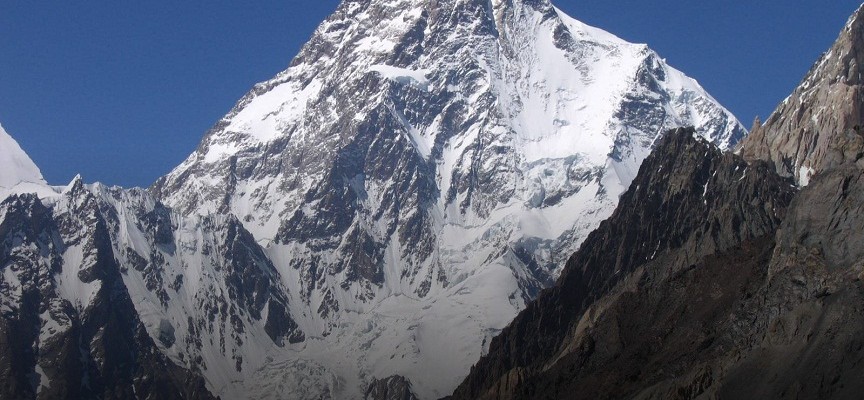


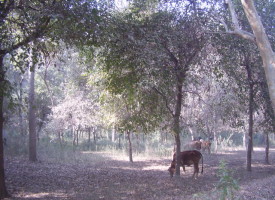

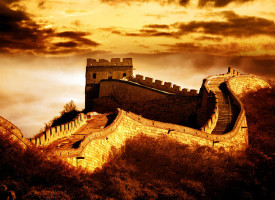
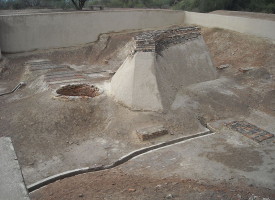
No comments!
There are no comments yet, but you can be first to comment this article.